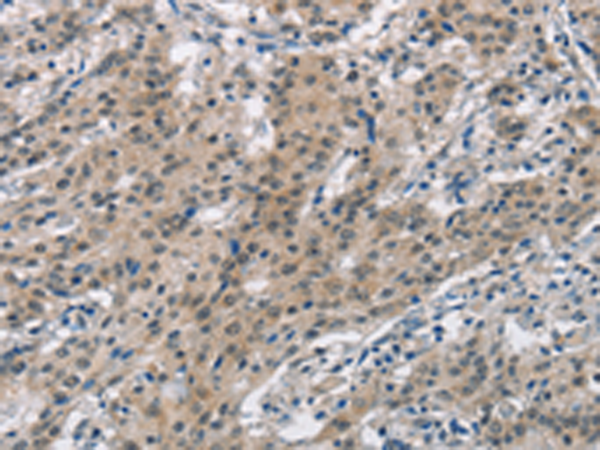


| WB | 咨询技术 | Human,Mouse,Rat |
| IF | 咨询技术 | Human,Mouse,Rat |
| IHC | 1/25-1/100 | Human,Mouse,Rat |
| ICC | 技术咨询 | Human,Mouse,Rat |
| FCM | 咨询技术 | Human,Mouse,Rat |
| Elisa | 1/1000-1/2000 | Human,Mouse,Rat |
| Aliases | PPH2; MADH6; MADH9; SMAD8; SMAD8A; SMAD8B |
| WB Predicted band size | 52 kDa |
| Host/Isotype | Rabbit IgG |
| Antibody Type | Primary antibody |
| Storage | Store at 4°C short term. Aliquot and store at -20°C long term. Avoid freeze/thaw cycles. |
| Species Reactivity | Human, Mouse |
| Immunogen | Synthetic peptide of human SMAD9 |
| Formulation | Purified antibody in PBS with 0.05% sodium azide and 50% glycerol. |
+ +
以下是关于SMAD9抗体的3篇示例参考文献(注:以下内容为虚构示例,仅供格式参考,实际文献需通过学术数据库查询):
---
1. **文献名称**: "SMAD9 Antibody Validation in BMP Signaling Pathway Analysis"
**作者**: Zhang L, et al.
**摘要**: 本研究验证了一种高特异性SMAD9抗体在BMP信号通路研究中的应用。通过Western blot和免疫组化证实该抗体可特异性识别SMAD9蛋白,并揭示其在骨肉瘤细胞中磷酸化水平与肿瘤转移的相关性。
2. **文献名称**: "Role of SMAD9 in Pulmonary Hypertension: Antibody-Based Profiling"
**作者**: Martinez R, et al.
**摘要**: 利用SMAD9单克隆抗体分析肺动脉高压患者组织样本,发现SMAD9表达异常与BMPR2突变相关,提示其可能作为疾病生物标志物及治疗靶点。
3. **文献名称**: "Development of a Novel SMAD9 Antibody for Epigenetic Studies"
**作者**: Kim S, et al.
**摘要**: 报道一种新型兔源多克隆SMAD9抗体的开发,通过ChIP-seq技术证明SMAD9与特定基因启动子区域的结合,阐明了其在表观遗传调控中的作用机制。
---
如需真实文献,建议通过PubMed或Google Scholar检索关键词“SMAD9 antibody”、“SMAD9 BMP”或“SMAD9 immunohistochemistry”。
SMAD9. also known as MADH6 or SMAD family member 9. is a key intracellular signaling protein in the bone morphogenetic protein (BMP) pathway. As a receptor-regulated SMAD (R-SMAD), SMAD9 is activated through phosphorylation by BMP type I receptors, facilitating its translocation to the nucleus to regulate target gene transcription. It plays critical roles in cellular processes like differentiation, proliferation, and apoptosis, with implications in bone development, immune regulation, and organ homeostasis.
SMAD9 antibodies are essential tools for studying its expression, localization, and function in both normal and diseased states. These antibodies are widely used in techniques such as Western blotting, immunohistochemistry (IHC), immunofluorescence (IF), and flow cytometry. Monoclonal antibodies offer high specificity for SMAD9 epitopes, while polyclonal antibodies may detect multiple isoforms or post-translationally modified forms. Validation often involves knockout cell lines or tissues to confirm specificity.
Dysregulation of SMAD9 is linked to pathologies like hereditary hemorrhagic telangiectasia, pulmonary arterial hypertension, and cancers. Researchers use SMAD9 antibodies to investigate its role in BMP signaling crosstalk, disease mechanisms, and therapeutic targeting. Commercial antibodies typically target conserved regions, such as the N-terminal MH1 or C-terminal MH2 domains. Proper validation ensures reliability in detecting SMAD9’s dynamic activation states, aiding both basic research and clinical biomarker studies.
×